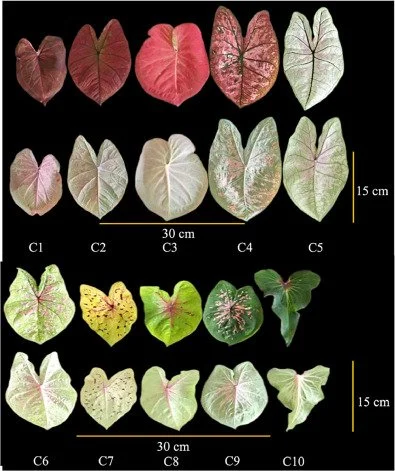Aroid History
Aroids (family Araceae) have a lengthy history, with fossil evidence dating back to the Early Cretaceous period, over 100 million years ago, and molecular data indicating its inception during the Late Cretaceous, more than 70 million years ago. They coevolved with insects, which are now their principal pollinators. Taro cultivation dates back 28,700 years, proving its significant historical and cultural value, especially in tropical countries.
Most aroid plants lack real stems, which are replaced by modified rhizomes. The only exceptions are lianas, which, because to their persistent aerial roots, can easily scale vertical surfaces and outcompete larger plants for habitat.
Interestingly, aerial roots, such as those found in one of the epipremnum kinds (Pothos), not only aid to produce heavy, long shoots, but also nourish the plant by receiving atmospheric moisture and, if possible, rooting. As a result, when cultivating indoor aromatic plants, they are not eliminated at all, but rather used to nourish and preserve the viability of long shoots.
Physiological characteristics of ornamental caladiums through leaf colour diversity
Wild and indoor fragrant plants produce leaves in an alternating pattern. Furthermore, most species have a prominent petiole, and the leaf plates come in a range of sizes, colors, and shapes, like for example a Caladium, which has acquired global notoriety. In addition to evenly colored entire leaves, aroids have finely divided, wavy, variegated, and strangely structured leaves. Because of their diversity and brightness, they were typically used as ornamental interior plants.
In terms of flowering, unlike the foliage, which is stunning in its unique forms, there is no diversity. All aroid plants, whether indoor or natural, produce a cob-shaped inflorescence of highly dense, small flowers. At the same time, the distinction between male and female flowers is clearly visible on the cob.
However, some species' flowers are bisexual. Inflorescence of an aroid plant.Inflorescences have a common structure, but their look and size can vary greatly, and most of them often give the impression of a single huge bloom, confusing both houseplant lovers and insects that pollinate such inflorescences.

